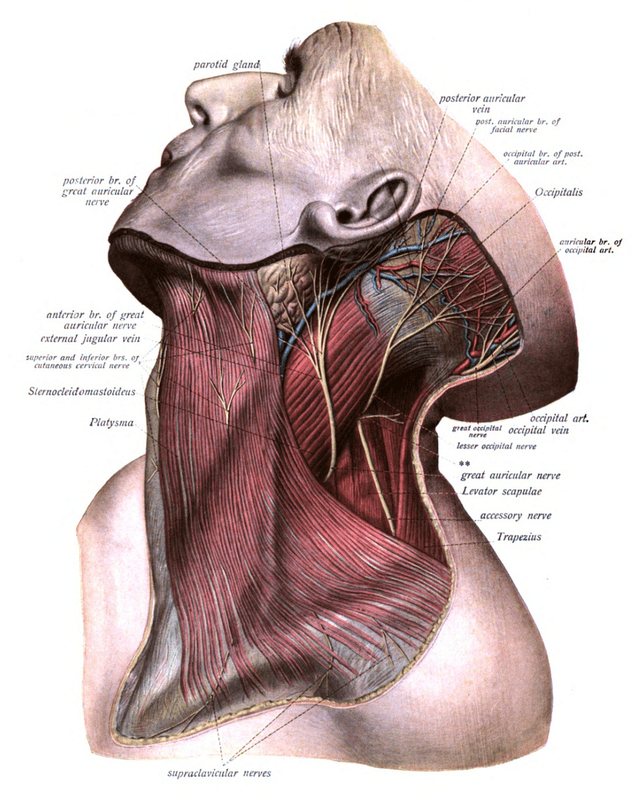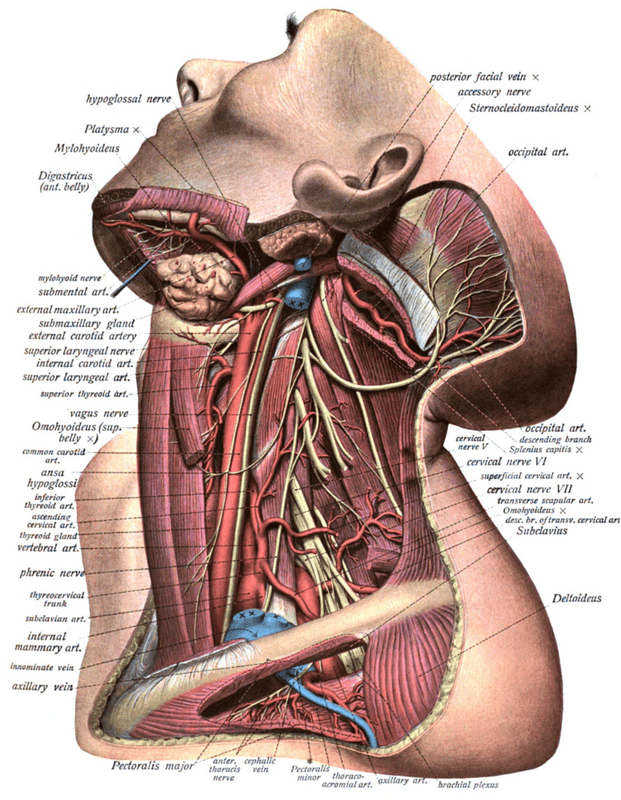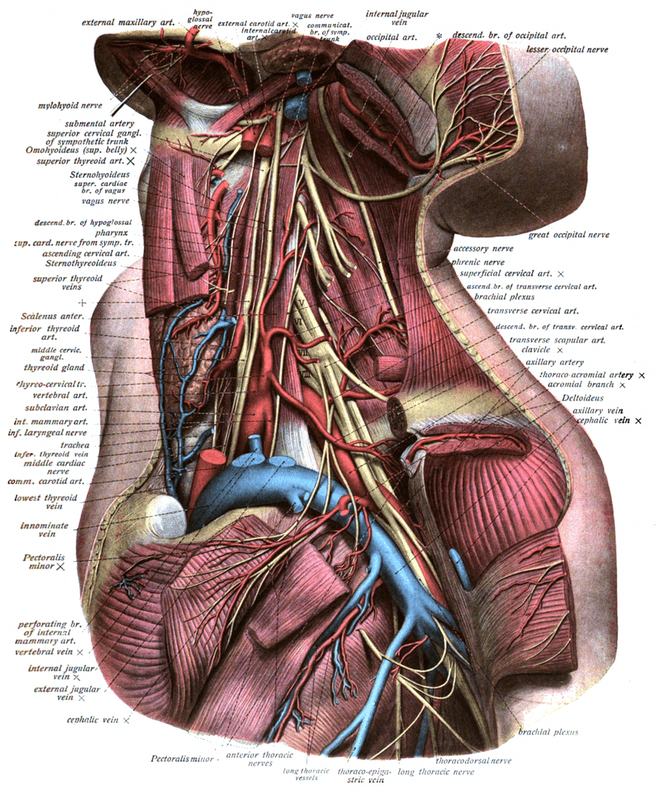WHIPLASH & CHRONIC NECK PAIN
FACTORS THAT MAKE THE ACCIDENT OR INJURY WORSE
- BEING FEMALE: Not only are women more prone than men to virtually all ENDOCRINE PROBLEMS, AUTOIMMUNE DISEASES, and even some of the CHRONIC INFLAMMATORY DEGENERATIVE DISEASES, they get the short end of the stick as far as Whiplash is concerned as well. Women are far more likely than men to have Chronic Pain and Disability (WAD — Whiplash Associated Disorders) as the result of these sorts of injuries. This is believed to be due mostly to the fact that women have less muscle mass in their necks and upper backs.
- BEING UNAWARE OF THE IMPENDING CRASH: Not sure if this is still the number one factor, but it used to be. Contrary to popular belief, not realizing you were about to be rearended was something like 15 times worse than your being aware.
- PROPERLY ADJUSTED HEAD-RESTRAINT: They are officially called head “restraints” — not head “rests” — for a reason. By restraining the head during impact, it cannot fly backwards during a rearender. Tearing tissue requires some degree of movement. Prevent the ability of the head to move during impact, and you prevent at least a certain degree of tearing. The middle of the head restraint should line up with the middle part of your ear. If you know (or think) you are going to get hit, plaster your body and head against your seat and head restraint.
- NEUROLOGICAL SIGNS AND SYMPTOMS: NECK PAIN is one thing, but when you start having neurological problems post-accident, this is not a good sign. A study from last week’s issue of the medical journal PLoS One (Risk Factors for Prolonged Treatment of Whiplash-Associated Disorders) stated that, “the baseline symptoms (dizziness, numbness or pain in the arms, and lower back pain) had the strongest associations with prolonged treatment for WAD (Whiplash Associated Disorders)“. I have seen any number of other studies dealing with numerous other neurological symptoms (HEADACHES or VERTIGO for instance), many of which could be categorized as a form of SYMPATHETIC DOMINANCE.
- MENTAL ISSUES GOING IN: The March, 2015 issue of the journal Physiotherapy (Risk Factors for Chronic Disability in a Cohort of Patients with Acute Whiplash Associated Disorders Seeking Physiotherapy Treatment for Persisting Symptoms) said that, “psychological and behavioral factors were important” as far as, “the strongest association with chronic disability” was concerned. What are these factors? PTSD was mentioned, but the authors were chiefly talking about something called “Catastrophizing“. Catastophizing is characterized as having a “victim mentality” and assuming / expecting that you will not get better with treatment. The study used the term, “self-assessed predicted time to recovery.” I have seen numerous other studies that say things like ANXIETY or DEPRESSION are also big factors in poor outcomes concerning WAD, although this study says, “Previous findings are mixed regarding the role of anxiety and depression in the development of chronic disability in acute WAD“.
- BECAUSE THE BRAIN IS AFFECTED, THE WHOLE BODY IS AFFECTED: One of the clearest examples of this phenomenon is seen in people who have crazy, long-term symptoms after Head Injuries or Concussions (HERE and HERE). A study from the August 2013 issue of BMC Psychiatry (Somatic Symptoms Beyond Those Generally Associated with a Whiplash Injury are Increased in Self-Reported Chronic Whiplash) looked at 17 health issues that would not be thought of by most people as typical of WAD (these are collectively known as somatiziation). They learned that, “Chronic whiplash was associated with an increased level of all 17 somatic symptoms investigated.” Gulp!
- GET BACK TO WORK AND DAILY LIFE ASAP: The April, 2014 issue of BMC Musculoskeletal Disorders (Multidimensional Associative Factors for Improvement in Pain, Function, and Working Capacity after Rehabilitation of Whiplash Associated Disorder) revealed that, “Pain relief, improved physical function and working capacity were associated with each other. Improved coping (catastrophizing and ability to decrease pain) and reduced depression may act as important predictors for pain relief and improved function.” The problem is that so often in the medical field, because most Whiplash sequelae cannot be seen on standard tests, the pain is blamed on Depression instead of the more likely fact that the pain and subsequent inability to function normally, causes one to be depressed. The subsequent ANTIDEPRESSANT MEDICATIONS are rarely beneficial over the long haul.
- BEING YOUNGER AND HEALTHY GOING IN: The study in the quote from the top of the page had this to say. “They found that patients who were younger than 35 years old and had a low level of disability soon after the injury…. had a better chance of achieving a full recovery.” This is old information, as it has been known for decades that older people with DEGENERATIVE ARTHRITIS in their necks were much more likely to have poor outcomes. There are also a number of studies, including Factors Related to Non-Recovery from Whiplash, from last June’s issue of the International Journal of Behavioral Medicine that reveals, “Poor self-rated health seems to be a strong risk factor for whiplash injuries becoming chronic“. The problem with we Americans is that we don’t always have a firm grip on reality. Numerous studies have revealed that we dramatically overestimate our health, while dramatically underestimating our weight (HERE).
- BEING HEALTHY GOING IN, PART II: Last month’s issue of PLoS One (Sick Leave Within 5 Years of Whiplash Trauma Predicts Recovery: A Prospective Cohort and Register-Based Study) took this concept a bit farther, showing that a high level of, “sick leave before the collision strongly predicted prolonged recovery following whiplash trauma. Neck pain at inclusion predicted future neck pain. Acute whiplash trauma may trigger pre-existing vulnerabilities increasing risk of developing whiplash-associated disorders.“
- OTHERS: The truth is, there are any number of others. Having the accident on wet or icy pavement means less friction and more impact (more potential tearing of tissue). Side impacts or having your head turned at impact can be a huge factor in worsening Whiplash Injuries. Also; still having pain and dysfunction 90 days after the accident does not bode well for a full recovery. And if you are driving one of those tiny econo-cars, be warned.
Before we move on, I want to leave you with one more interesting tidbit I found that is related to studies I saw while taking a SPINAL DECOMPRESSION seminar in Chicago several years ago. It turns out that it does not take much time for a person dealing with serious lower back pain for the one of the chief muscles under the THORACOLUMBAR FASCIA (the Multifidus) to turn to fat.
A brand new study from the journal Spine (The Rapid and Progressive Degeneration of the Cervical Multifidus in Whiplash: An MRI Study of Fatty Infiltration) reveals that essentially the same thing is going on in the neck (the Cervical Multifidus muscle) after a Whiplash Accident / Injury. “The development of MFI (Multifidus Fatty Infiltration on conventional magnetic resonance image has been shown to be associated with specific aspects of pain and psychological factors. Consistent with previous evidence, muscle degeneration occurs soon after injury in those patients with poor functional recovery. This study provides further evidence that multifidi MFI occur in tandem with known predictive risk factors (older age, pain-related disability, and post-traumatic stress disorder).”
YOU’VE BEEN INJURED
WHAT DO YOU DO NEXT?
- UNDERSTAND THE INJURY: If you don’t have a grasp of WHAT’S GOING ON as far as the healing process of the injured tissue is concerned, you are much more likely to blow it off because the pain’s ‘not that bad’. The problem is, there is a window of opportunity for healing to occur that begins closing immediately after the WHIPLASH INJURY. A failure to reach “Functional Recovery” means a tougher row to hoe in the future. Not that you can’t be helped (many examples on my TESTIMONIAL PAGE of people being helped with decades-long Chronic Neck Pain), it’s just harder.
- DEAL WITH INFLAMMATION: You have to deal with both Chronic Systemic Inflammation as well as Local Inflammation. This is because Inflammation always leads to Fibrosis (microscopic Scar Tissue — HERE, HERE, HERE, and HERE). Doctors are aware of this and prescribe NSAIDS and CORTICOSTEROIDS — both of which are crappy options for healing soft tissues such as LIGAMENTS, TENDONS, MUSCLES, and particularly FASCIA. A failure to effectively deal with Inflammation means that on some level, you’ll be working against yourself.
- RESTORE MOTION: This must be done segmentelly as well as sectionally. In other words, it’s not enough to simply use stretches in an attempt to restore gross RANGE OF MOTION of the neck. The motion must be normalized at each individual joint. This is one of the many things that CHIROPRACTIC ADJUSTMENTS work well for, and why STRETCHING ALONE is typically not enough (see next bullet) — particularly in severe injuries.
- BREAK THE ADHESIONS: Microscopic adhesions of the Fascia (SCAR TISSUE) are a huge problem, not only because of the fact that Scar Tissue is so incredibly PAIN SENSITIVE, but because it cannot usually be imaged with standard tests such as MRI (HERE). Fail to deal with it and it not only has the potential to create pain, but tethers your ability to move normally, which sooner or later always leads to problems.
- RESTORE THE NECK’S PROPER CURVE: This is of critical importance, and as amazing as it may sound, even the medical research community is starting to talk about the numerous problems associated with not having this proper curve of the neck. If you want to understand this point better, I created several articles on the topic, all of which can be found under THIS ARTICLE.
- USE A COLD LASER: There are any number of modalities out there (Ultrasound, Electric Stimulation, etc, etc), but I believe that Low Level Laser Therapy stands head and shoulders above all of them. Rather than me spending time talking about it, just take a moment to look at THIS LINK.




